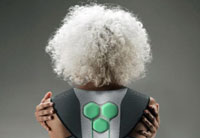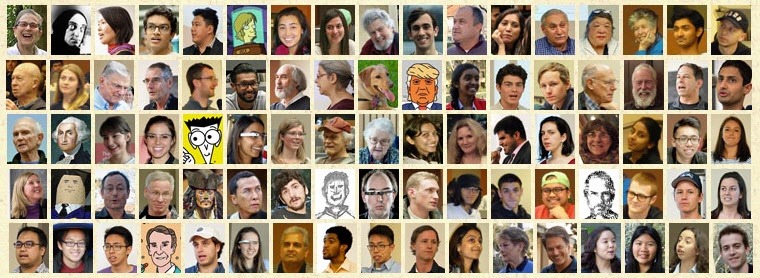
This course relies on your involvement, Introduction to Student Projects The previous newsletter described the benefits & process for submitting a student project suggestion. This issues lists the requirements for those suggestions. Project Requirements What are the project requirements? - When considering a project suggestion, keep in mind these broad requirements: Deliverable: Project suggestions must involve the design and fabrication of devices (or the development of software) that addresses problems or challenges experienced by older adults, individuals with a disability, or those who care for them, including family members, therapists, and other health care professionals. Non-engineering issues such as health care insurance, legislation, and policy can not be pursued. Creativity: In pursuit of their projects, student teams are required to fully understand the problem, search for existing products, identify the need, brainstorm concepts, choose a design (or designs), and fabricate, test, analyze, and report on their creative solution. Originality: Student teams' designs must not be a copy of an existing commercial product (perform an internet search to confirm this) or a physical representation of another's design concept. Feasibility: Projects' aims and specifications should be realistic. Project solutions that can only be achieved by employing magic, violating the laws of physics, defying gravity, creating a perpetual motion machine, employing materials or technology that do not exist, or disrupting the space-time continuum are extreme examples of infeasible projects. Suitability: Unsuitable project suggestions include those involving advertising, engaging in market or data analysis or research, performing surveys, creating websites, compiling databases, or pursuing long-term studies. Overlap: Project suggestions must focus on real problems that are inadequately addressed by commercial products and could include diagnostic and rehabilitation therapy equipment as well as personal devices. Projects that assist family members or health care professionals in caring for individuals with disabilities and older adults are also welcome. Scale and Complexity: Project suggestions must be of appropriate scale and complexity to be completed (design, fabrication, and testing of a functional prototype) in one academic quarter (about 8 weeks). Availability: For project suggestions that involve modifying an existing assistive technology device like a wheelchair, a sample device must be made available to a student team. Size: Project solutions must be of an appropriate physical scale. The prototype should fit on a desktop as there is insufficient space on campus to work on larger items such as cars. Work Location: A majority of the project fabrication effort should occur on campus rather than in the residence of the older adult or person with a disability. Expertise: Project suggestions must be compatible with the skill level and expertise of students in the course who typically have mechanical engineering backgrounds, although some may have product design, electrical engineering, computer hardware, and/or software experience. Cost: Estimated parts and fabrications costs must be modest - no more than a few hundred dollars. Lower Cost: Fabricating a ready-to-be-manufactured, lower cost version of an existing product is not a suitable project goal as a student team's final prototype is a very long way from a potential commercial product and parts typically represent less than 10% of a product's retail price. Proprietary: Project solutions must not require access to or modification of proprietary software, such as adding functions to a cellphone. Participation: An older adult, a person with a disability, a family member of a person with a disability, or a health care professional must be available locally (within 25 miles) to work with the student project team to further illustrate the problem, offer advice during the quarter, and test the students' prototypes. Risk: Project prototypes must not pose any risk of harm to the user or student team. The device must also be minimally invasive and must not provide physical therapy or cause changes in physical anatomy (without the consent of the instructor and presence of a therapist or physician). Damage or Modification: Project work must not damage or alter any Stanford or private property. Examples of prohibited activities include drilling into walls, rewiring the installed infrastructure, home improvements, and vehicle modifications. Duplication: Project suggestions should not be a duplication of a candidate project already described in the current candidate project list. Support: Project suggestions supported by a monetary gift to the course will be given preference. See Call for Project Support. Review of Project Solicitation Process and Activities Briefly, what is the process for considering and submitting project suggestions? - First identify a specific challenge or problem experienced by a person with a disability or older adult. Then perform an internet search to confirm that the problem has not already been adequately addressed. Then carefully review the project requirements listed above to make sure the idea complies with all the criteria. Finally submit a short email - text format is ok - that identifies the user or population affected and briefly describes the nature of the problem. Include desirable features of a solution, but do not specify how the device should appear, be built, or solve the problem - as those are tasks for the student team to consider. It is ok if the problem affects just one individual. Refer to the current candidate project list as a guide. What specific activities lead to a suitable student project suggestion? - Refer to this list of specific activities. What happens after a project suggestion is submitted? - Submitted project suggestions will be read, reviewed, and considered. Those that meet all the project requirements and receive my approval will be accepted as candidate team projects. A project Problem Statement describing the project will be composed for posting on the course website and disseminated as a handout to students on the first day of class. Project Suggestion Submission Deadline What is the deadline for submitting project suggestions? - Please email suggestions to me as soon as possible so I have adequate time to consider all submissions, edit approved entries, and post them - not later than Saturday, December 1st. Feel free to contact me before the deadline to discuss your ideas and suggestions. Opportunity to Learn about Powered Clothing
Upcoming Local Event
Email questions, comments, or suggestions - Please email me if you have general questions, comments, or suggestions regarding the course. Thank you again for your interest. Dave
|
||||||||||||||||||||||||||||||||||||||||




